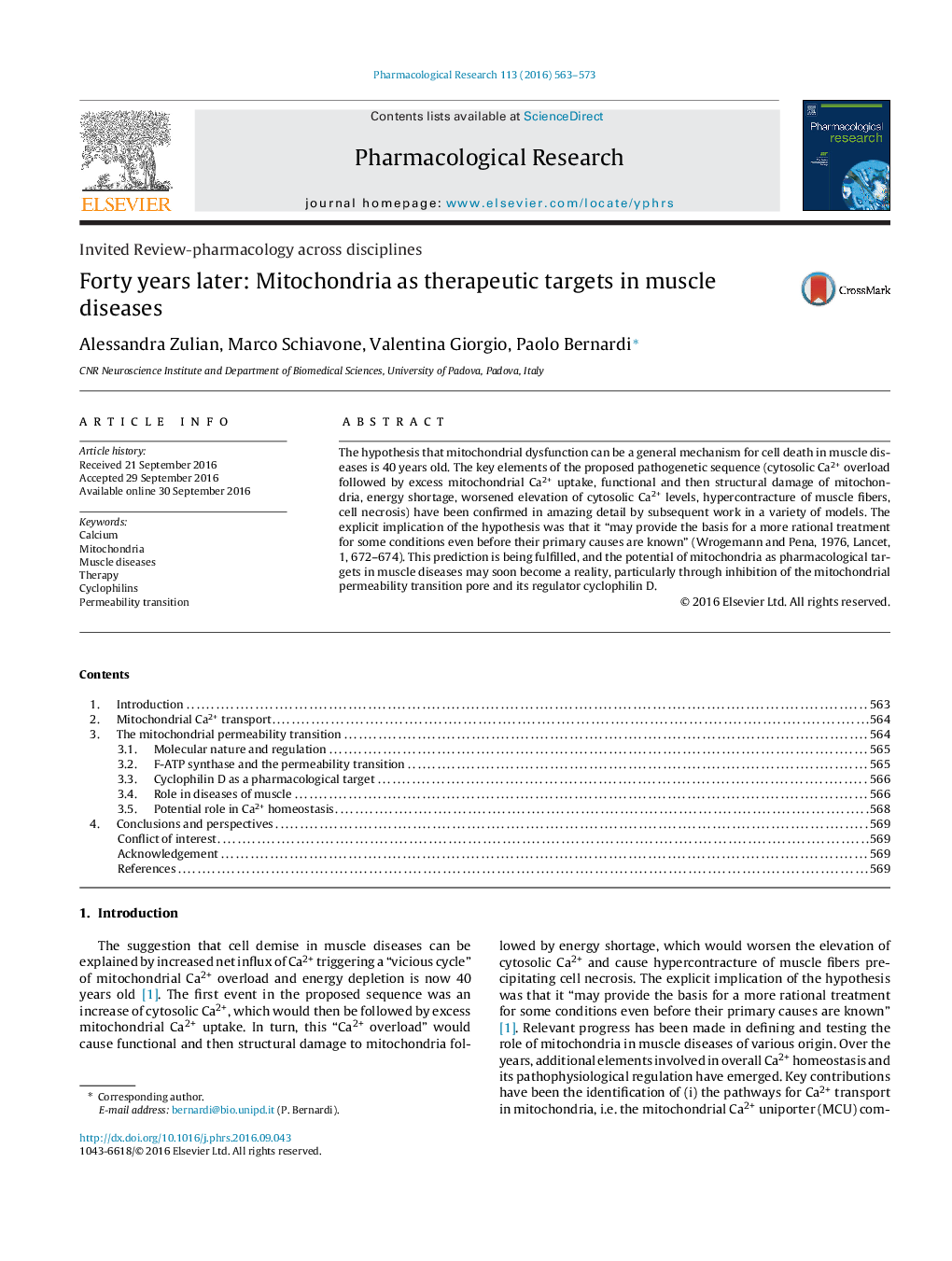| Article ID | Journal | Published Year | Pages | File Type |
|---|---|---|---|---|
| 5557585 | Pharmacological Research | 2016 | 11 Pages |
The hypothesis that mitochondrial dysfunction can be a general mechanism for cell death in muscle diseases is 40 years old. The key elements of the proposed pathogenetic sequence (cytosolic Ca2+ overload followed by excess mitochondrial Ca2+ uptake, functional and then structural damage of mitochondria, energy shortage, worsened elevation of cytosolic Ca2+ levels, hypercontracture of muscle fibers, cell necrosis) have been confirmed in amazing detail by subsequent work in a variety of models. The explicit implication of the hypothesis was that it “may provide the basis for a more rational treatment for some conditions even before their primary causes are known” (Wrogemann and Pena, 1976, Lancet, 1, 672-674). This prediction is being fulfilled, and the potential of mitochondria as pharmacological targets in muscle diseases may soon become a reality, particularly through inhibition of the mitochondrial permeability transition pore and its regulator cyclophilin D.
Graphical abstractDownload high-res image (126KB)Download full-size image
